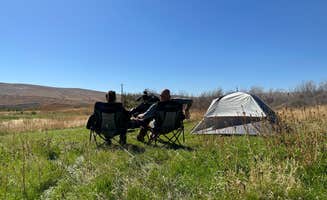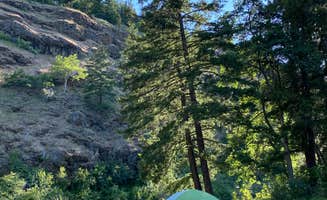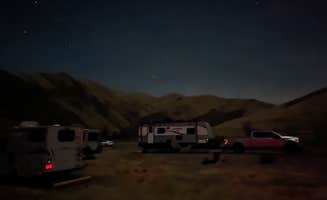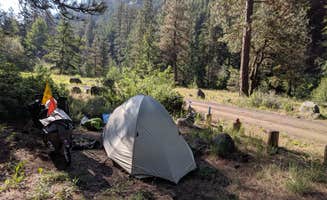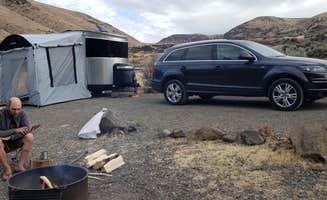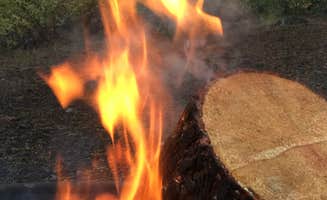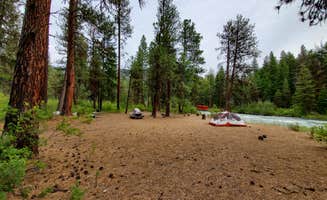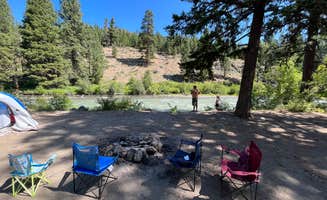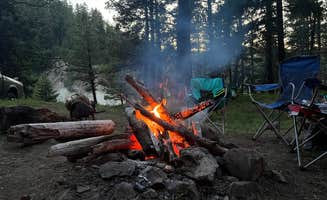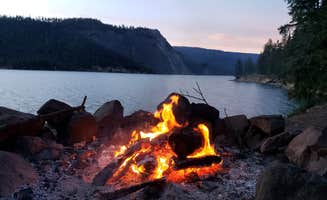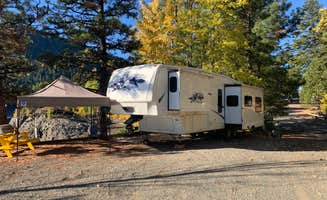The Cowiche area sits within central Washington's shrub-steppe ecosystem at elevations ranging from 1,500-2,000 feet. Camping sites near Cowiche, Washington feature distinctive high desert terrain with hot, dry summers reaching 90-100°F and cold winters with temperatures often below freezing. Campgrounds along the Yakima River corridor contrast sharply with the surrounding arid landscape, creating riparian zones that attract diverse wildlife.
What to do
Fly fishing access: The Yakima River provides premier trout fishing opportunities in the canyon areas. At Big Pines Campground - Yakima River Canyon, campers report excellent river access. "Large Campground right on the river. Very little shade. Vault toilets. Great place to stay for floating the river or fishing located in the beautiful Ellensburg canyon on the Yakima river," notes Tonya T.
Wildlife observation: Multiple campgrounds provide opportunities to view native wildlife in their natural habitat. "We saw Bighorn sheep on the hill, big rock squirrels, wild turkeys with babies, and fish. No rattlesnakes or ticks, but this is prime territory," reports one camper about Umtanum Campground.
Hiking trails: The region offers diverse hiking opportunities from riverside paths to ridge trails. "The hiking was great, so much beautiful greenery and trees! The campground was 'okay.' It wasn't really that well kept, a little dirty and no toilet paper in the gross porta-potty style toilet," explains Skylar M. about trails near Windy Point.
What campers like
River proximity: Many campgrounds provide direct river access for cooling off during hot summer days. At Windy Point Campground, campers appreciate the water features. "We stayed here a few days in July and loved it! The river is so beautiful with the waterfall cascading down into the river directly across from the campsite. There is a shallow part near the shoreline where the kids had a great time playing in the river," writes Jason S.
Privacy options: Some sites offer more seclusion than others, with riverside locations typically most coveted. At Hause Creek Campground, one camper explains, "Site 12 has the best privacy and easy, level beach access, with a large hill on one side and smaller one on the other. It sits lower than site 11 with the upward slope and foliage to create a screen."
Seasonality advantages: Spring and fall camping provides more comfortable temperatures and fewer crowds. "We camped at Willows for a weekend in May. The site offers approximately 10 sites that can be used for tent or RV camping. Moderately spaced from the other sites. Parallels the river. The tent areas are all level, ground mainly dirt/gravel," reports a camper at Willows Campground.
What you should know
Water availability varies: Many BLM sites lack potable water, requiring campers to bring their own. "The water in the hose wasn't clear so I wouldn't use it for drinking without boiling but the toilets are clean and stocked," notes Sue H. about Windy Point.
Road noise considerations: Highway proximity affects some campgrounds more than others. At Roza Campground, campers mention that "it is near a main road and there is some road noise," though many find the river sound provides natural white noise.
Limited connectivity: Cell service is minimal throughout the canyon areas. One visitor to Squaw Rock Resort reports, "You're in a valley with NO cell service. Wi-Fi in the park is non-existent. There's a weak signal near the office."
Wind conditions: The name "Windy Point" is apt, as wind is common throughout the region. "The spot is windy, but didn't have too much of an issue getting the fire going," writes Cassandra C. about camping at Windy Point.
Tips for camping with families
Swimming options: Some riverside campsites include shallow areas suitable for children. "There is a shallow part near the shoreline where the kids had a great time playing in the river. The river itself is wide and very fast moving," notes a camper about the waterfront at Windy Point.
Wildlife education opportunities: The diverse ecosystem provides teaching moments. At Yakima Sportsman State Park, one visitor appreciates that "there are tons of hikes and a small pond to explore...with turtles!"
Site selection for shade: During summer months, shade becomes critical. "August is a tough time to be there with 90 degree weather and lack of shade. Mornings were nice with coffee sitting out watching the high paced river go by," shares Donald C. about camping in the region.
Playground facilities: Some campgrounds offer dedicated play areas. At Ellensburg KOA, a visitor notes, "Our site was near the playground which was central to the camp ground. There is a TV/play room that my littles loved but not as much as the heated pool, yes, they have a heated pool!"
Tips from RVers
Hookup variations: Different campgrounds offer varying levels of services. "Not all sites have sewer hookups. Know what you are getting! Single utility service serves two sites. The water spigot has a Y splitter to share a single water connection. Power has one 30 Amp and one 50 Amp socket," explains an RVer at Squaw Rock Resort.
Site leveling: Many campgrounds feature relatively level sites requiring minimal adjustment. "Our site was very close to level. The sites are very close together and you share the site utilities. It can get tight," reports Cande D.
Seasonal availability: Year-round options exist, but amenities may be limited in winter. "We stayed here 10 days or so. It is a nice split between towns, Ellensburg and Yakima. The hiking is a pleasure in the area, with lots of wildlife," shares an RVer about camping at Umtanum Campground during cooler weather.
Hose length planning: Water connections might require extra equipment. "Bring an extra hose because your connection may be at the front right of your camper," advises Thomas M. about RV camping at Squaw Rock Resort.


